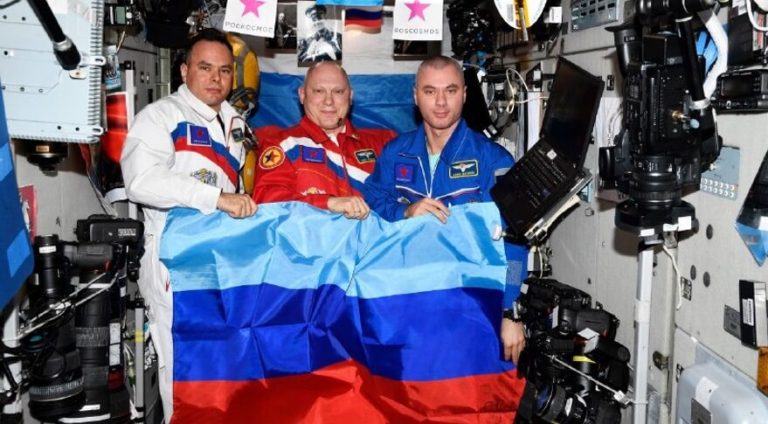
NASA International Space Station image ISS005-E-15296, 2002 (). The summit of Rinjani (right) contains a crater that postdates caldera formation. The Barujari cone in the center has produced lava flows that have entered the lake. This International Space Station image from 2002 with N to the top shows the 6 x 8.5 km Segara Anak caldera. NASA International Space Station image ISS006-E-39998, 2003 (). Snow-covered Callaqui volcano (bottom left-center) overlies the western rim of Caldera del Agrio. Trocon is a lava-dome complex with two summit craters and a pyroclastic cone. Trocon lies in Argentina NE of the Caldera del Agrio (lower right), whose floor contains several lakes, including the U-shaped one at lower right near the SE caldera wall. The small snow-free crater at the upper right, above and to the right of the light-colored area just right of the center of this NASA International Space Station image (with north to the upper left) is Trocon volcano.

NASA International Space Station image ISS005-E-18300, 2002 (). Portage Lagoon and Sergief Bay at the upper right almost bisect the island. The large embayment at the right-center is Podsopochni Bay. The SW part of the Atka Island is older and less topographically rugged than the NE part of the island, and the age of this small stratovolcano is not precisely known. Sergief volcano on SW Atka Island lies below and to the left of the center of this NASA International Space Station image (with north to the lower right). Williams, Flight Engineer and NASA Science Officer, International Space Station Expedition 13 Crew, NASA Earth Observatory. The photograph shows the ash plume moving SW from the summit with N at the top and Carlisle Island to the NW.Ĭourtesy of Jeffrey N. Eruption of Cleveland on as photographed from the International Space Station at an orbital altitude of approximately 400 km. NASA International Space Station image ISS001-E-5957, 2001 (). A young cone and crater form the western summit. The Tana volcanic complex in the center of this NASA International Space Station image forms the eastern half of Chuginadak Island, across from Cleveland visible to the upper left. NASA International Space Station image ISS014-E-17165, 2007 (). Dome growth had recommenced in 1999 and resulted in ash plumes, avalanches, and occasional block-and-ash flows. An ash plume from Sheveluch was photographed by NASA astronauts aboard the International Space Station (ISS) around 21 March 2007. NASA International Space Station image ISS020-E-9048, 2009 (). The main explosive phase ended on 16 June, but weak explosions producing ash plumes continued prior to arrival of a field team on 26-28 July, when no eruptive activity was observed. This NASA Space Shuttle view on 12 June shows an eruption plume that rose to 16-21 km altitude pyroclastic flows reached the sea and extended the shoreline in some areas. One of the largest recorded eruptions in the Kuril Islands took place 11-16 June from Sarychev Peak. So far, over 257,000 people have liked the post.Astronaut photos from the International Space Station. The ISS shared these pictures with 7.6 million of their Instagram followers. The third is a breathtaking photograph of night lights of Italy during and orbital twilight, while the fourth shows captivating hues of an orbital sunrise in far easter Asia. In the second photo, we can see the Sun's glint beaming off the Tasman Sea on the south-eastern coast of New South Wales, Australia. So, what are the amazing sights in the newest set of photos from the space station? The first image is of Mauritius and Réunion Island on the Indian Ocean at night, with the glittering lights marking their boundaries in the dark sea. In a new Instagram post, the ISS shared four different photos of “the Earth's colours” - capturing our home planet “from the city lights to the hues of an orbital sunrise.” It also added “how vivid our planet is when pictured from the space station.”

International Space Station (ISS) has shared some spectacular photos of the Earth, captured by the astronauts stationed on it.


 0 kommentar(er)
0 kommentar(er)
